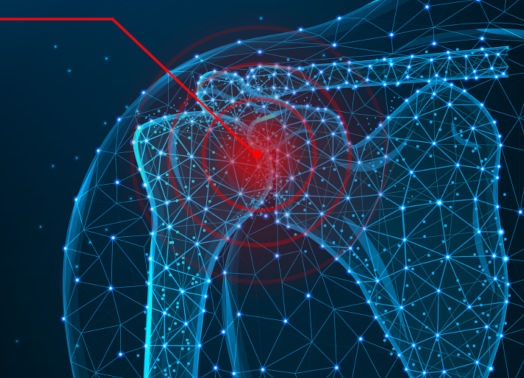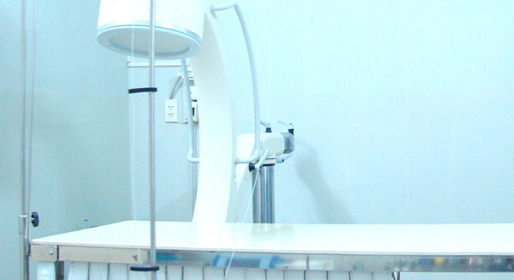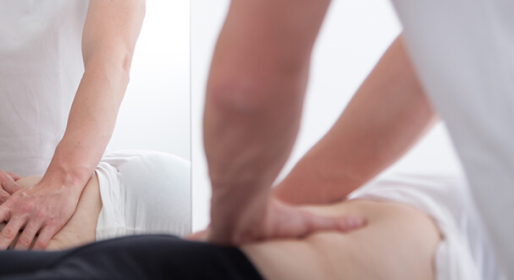Treatment of knee pain in Munich
Knee
Diagnosis of knee pain in Munich
At the beginning, the focus is on a detailed discussion with the patient about the medical history and causes. This is followed by a detailed clinical examination with a movement check to determine the exact extent of the functional impairment. In many cases we use what are known as imaging procedures; these are helpful to consolidate the diagnosis. Ultrasound (sonography), x-rays, magnetic resonance imaging (MRT) or computed tomography (CT) are available. We then create a therapy concept that is individually tailored to the patient and initially focuses on the broad spectrum of conservative treatment options. This will usually treat you effectively and safely for most knee complaints.
Your advantages at OrthoCenter Munich
- Orthopedic treatment focus on spinetherapy
- Wide range of conservative and operative procedures
- Gentle procedures in focus: Dr. Riedel specializes in gentle pain therapy. He was head physician in various pain clinics for over 20 years
- Joints and surgical expert: Prof. Dr. Lill specializes in the treatment of joints. He has years of experience in the field of minimally invasiveand arthroscopic ops.
- Cooperation with clinics and research institutes worldwide
- Renowned private practice: the OrthoCenter is internationally known and repeatedly welcomes patients from abroad who come to Munich for treatment
OUR ORTHOPEDIC SERVICES FOR KNEE IN THE SHOULDER
Torn or injured meniscus
Causes & Symptoms:
From floorers to skiers, meniscus injuries can happen to anyone who puts their knees through repeated stress. Learn more about this type of injury and the treatments available for a full recovery.
If the inner or outer meniscus tears, you may experience the following symptoms: acute pain that increases with rotational and bending stress, effusion of fluid throughout the knee joint, pressure-sensitivity on the outer edge of the meniscus and/or pain in the back of the knee and difficulty bending or stretching the leg. Not infrequently, a meniscal tear will occur together with a ligament tear or other type of knee injury. Therefore rapid assessment and treatment of the injury or injuries are necessary.
Treatment:
With the help of an x-ray and ultrasound your orthopaedic specialist will be able to make an informed diagnosis. Not every meniscus injury requires surgery. Physical therapy can also help to heal a damaged meniscus. If surgery is deemed to be necessary, you should not wait long to undergo treatment. An injured meniscus can lead to progressive cartilage damage and bone damage, ultimately leading to knee arthritis.
Torn anterior cruciate ligament
Causes & Symptoms:
A torn ligament can often affect very physically active people. Different sports, especially those where the legs and knees are heavily used, can be the cause of such a tear. The mobility of the patient is severely limited by this type of injury.
A tear of the ACL or PCL is not something that goes unnoticed. Very quickly after the injury, the patient will notice tremendous swelling in the knee and will of course experience pain. Pain is generally the indicator of such a tear but there also tends to be an accompanying popping sound. Because of the difficulty experienced in trying to diagnose a torn ligament, they often go undetected. You should therefore contact an orthopaedic specialist who can quickly make a proper diagnosis and initiate the appropriate steps for treating this injury.
Treatment:
Depending on each individual case, the orthopaedic specialist will recommend either a surgical or conservative method of treatment. Consistent weight training can restore stability in the knee joint and compensate for the now disfunctional ACL or PCL. For athletically active individuals, surgery is usually recommended. During ligament surgery, the damaged part of the ligament will be removed and replaced with tissue from elsewhere in the body.
Knee cartilage damage
Causes & Diagnosis:
Cartilage damage is an orthopaedic condition that patients should always get treated. This smooth cartilage protects the bones from wear and tear and overall destruction in the long term. Complications can be prevented by treating this condition.
Treatment:
Depending on what stage the disease has reached there is a choice of operative and non-operative treatments. If the cartilage has softened or torn, medication, injections and physical therapy can prevent advanced knee cartilage damage from occurring. In cases of defects that extend to the bone, knee surgery is advisable. As part of a knee arthroscopy, cartilage may be transplanted, loose fragments removed and further steps taken to positively impact the healing process.
Arthritis knee joint
Causes & Symptoms:
All joints are much more burdened in people who are overweight than in those who are of a normal weight. Arthritis, specifically knee arthritis, is therefore fairly common in overweight people. Knee arthritis also occurs with old age, or may alternatively be the result of a sports injury. The symptoms of knee osteoarthritis usually include pain. In the early stages, knee arthritis may not be noticeable because of the lack of pain. In all instances of suspected arthritis, early treatment is recommended to prevent stiffening of the joint and loss of knee function.
All joints are much more burdened in people who are overweight than in those who are of a normal weight. Arthritis, specifically knee arthritis, is therefore fairly common in overweight people. Knee arthritis also occurs with old age, or may alternatively be the result of a sports injury. The symptoms of knee osteoarthritis usually include pain. In the early stages, knee arthritis may not be noticeable because of the lack of pain. In all instances of suspected arthritis, early treatment is recommended to prevent stiffening of the joint and loss of knee function.
Treatment:
Untreated knee arthritis can lead to a total loss of the knee joint. The outlook after early treatment is very bright – even without surgery. If the arthritis has occurred simply because of old age, additional measures will be taken to alleviate the symptoms associated with the condition. Knee osteoarthritis, which can rapidly deteriorate, must first be treated by eliminating the causes of the condition. Weight reduction is an important therapeutic recommendation. Physical therapy should also be undertaken to help strengthen muscles around the knee. Surgery may be required in cases of severe cartilage degradation. Depending on the stage of the disease, cartilage may be able to be transplanted or the entire joint may have to be replaced. Knee pain is the first alarm that knee arthritis is affecting your knee. An orthopaedic specialist can help you prevent the rapid deterioration of the knee joint’s condition.
Deviation leg axis
Causes & Symptoms:
The incorrect loading of one or both of the legs due to a deformity or abnormal gait leads to long-term damage of the joints and must be treated as early on as possible by an orthopaedic specialist. In general, the so-called bowlegs and knock-knees are not associated with pain. Pain is normally only caused by degenerative disease resulting from these abnormalities. You should never let the condition get this far, though, because treating leg deformities is relatively easy.
Treatment:
Orthopaedic shoes, inserts and splits are the most common choices for treating leg deformities. Most gait abnormalities can be treated in this manner and thus further damage is prevented. Severe deformation of the legs must be treated surgically as part of a corrective osteotomy. Here, the affected bone is cut out, reshaped and reinserted to the correct position. Cartilage that may have already been slightly damaged is now free of pressure and other conditions can no longer arise because of the knock-knees or bowlegs. The treatment of knock-knees and bowlegs is daily business for orthopaedic specialists. An exact examination of the cause and of course of the resulting damage is absolutely necessary.
Patellar luxation
Causes:
Regardless of whether or not the patella sorts itself out or remains in the incorrect position, an orthopaedic surgeon is required to help treat a dislocated patella. Generally this condition only occurs in people who have a congenital malformation of the kneecap and floating bearing, but it is also possible to be caused by an injury. Find out how this condition manifests itself and how it is treated.
Symptoms & Treatment:
Even if the patellar luxation corrects itself, it is still important to figure out why it happened in the first place. If the kneecap itself is malformed, this will need to be corrected to prevent further dislocation. Also, it is important to determine whether or not there has been a crack in the retinaculum. Particular caution is advised when the patella remains out of position. Not only is this extremely painful, but realigning the kneecap should only be done by a professional. Doing so incorrectly may damage cartilage and bone, which in turn can cause other knee conditions.
Aching kneecap
Causes & Symptoms:
The aching kneecap is a common disease, of which many people are at least temporarily affected. Take the pain long time or do they always noticeable – for example, by stress and rest pain in the knee – an orthopedist should investigate the causes of the disease.
Treatment:
As varied as the causes of knee pain are also their treatment options. Physiotherapy is also in question as a medical treatment, orthopedic shoes as well as cold therapy. In severe cases, surgical treatment may be necessary, preceded by a detailed study of the exact causes of an aching kneecap.
Patella dysplasia
Causes:
If the kneecap is not being used in a uniform manner, this may be because of years of wear and the onset of dysplasia. In this case, the cartilage below the kneecap will have worn out. Knee pain will follow and a timely diagnosis as well as a course of treatment are necessary to prevent this wear on the patella.
Treatment:
An x-ray of the kneecap will allude to its symmetry and form, so that dysplasia can either be ruled out or diagnosed and treated quickly. A deformed kneecap can cause pain to develop over many years in the knee, but this may never be the case. Treatment of course is only necessary in cases where pain is present. Through targeted strength conditioning of the knee extensors and stretching of the hamstring, the pain can be stopped. If this fails, depending on the type of condition the patient has, different forms of surgical treatment will be offered to correct this knee dysplasia. Knee dysplasia is an orthopaedic disease that can lead to serious injury of the knee if left untreated. If you experience long-lasting knee pain, you should let your knee be examined by an experienced orthopaedic specialist.
Knee bursitis
Causes:
Bursae perform an important role in the overall function of the knee, acting as a type of cushion that protects the knee from overuse and injury. If one subjects their knee to monotonous motions or there is a deformity in the knee joint, bursitis can develop. Injuries and accidents can also be at the root of the condition. The disease is usually characterised by swelling and pain. For each potential case a clear diagnosis and appropriate course of treatment are advised.
Treatment:
If your case of knee bursitis is caused by another knee disorder, treatment of this other disorder is also required. Incorrect movement patterns can be changed with the help of an occupational therapist in order to prevent over-burdening the knee. Physical therapy, mud therapy, electro-therapy, injection and ultrasound therapy are all types of treatment that can immediately be started. Strengthening exercises will be of great benefit. These should also offer you almost immediate relief from discomfort. Only in severe cases will surgery be required to help clear up bursitis.

Your knee specialist Prof. Dr. Lill
YOUR CONTACT FOR KNEE PAIN
The orthopaedic specialist and surgeon Professor Lill is well known for his expertise in treating and diagnosing all type of knee problems. Make an appointment with him today and allow him to relieve your knee pain.















